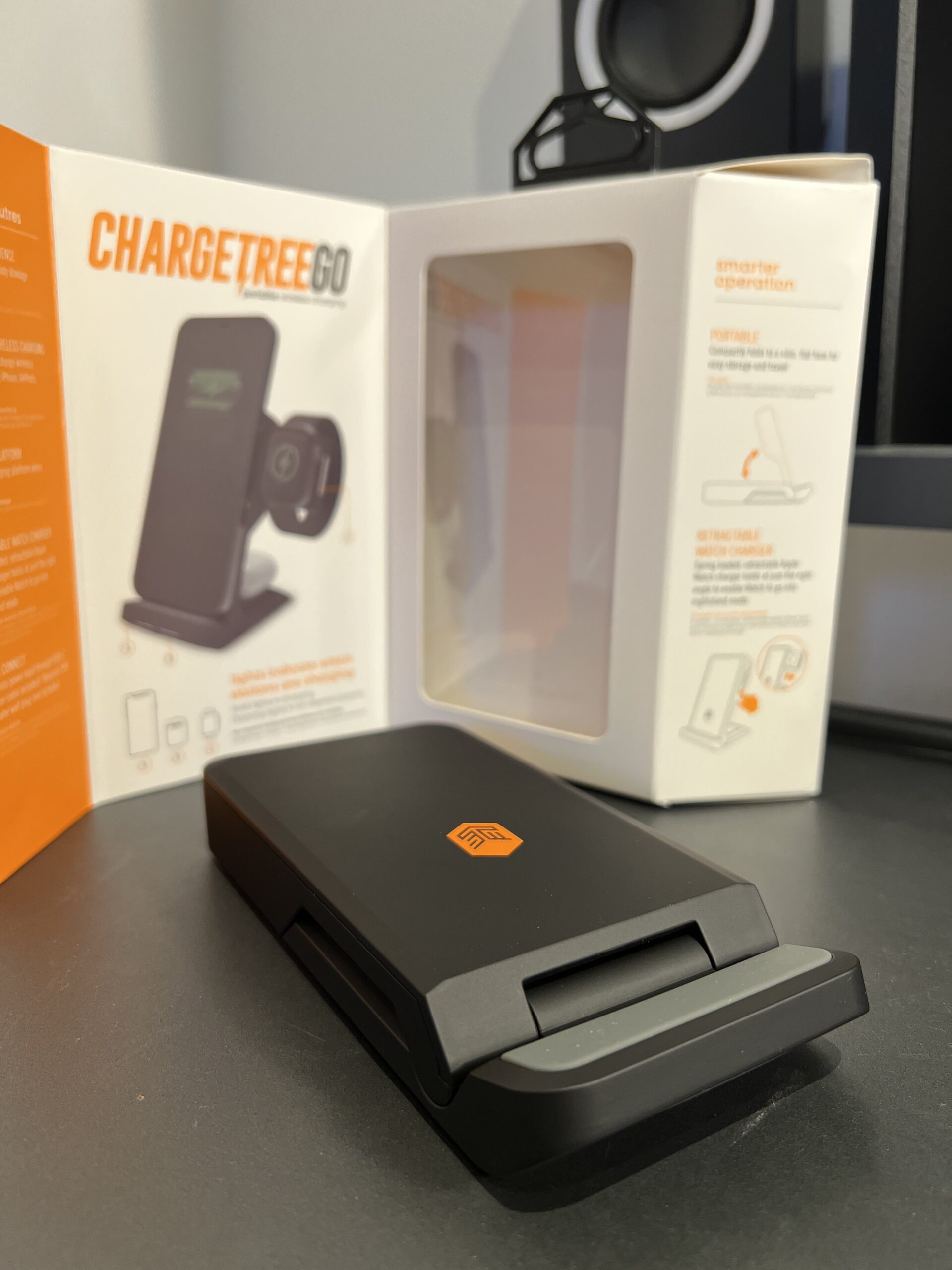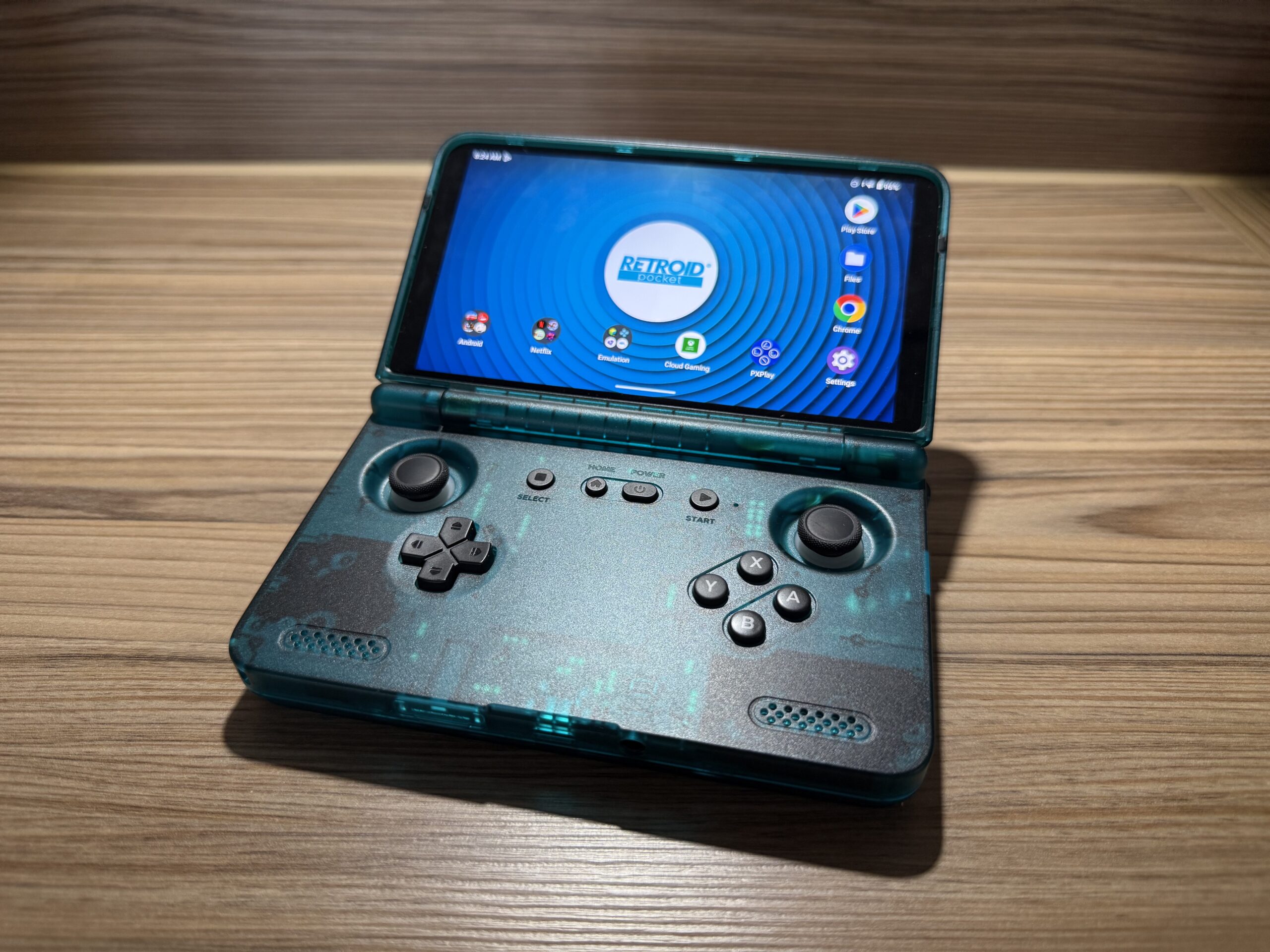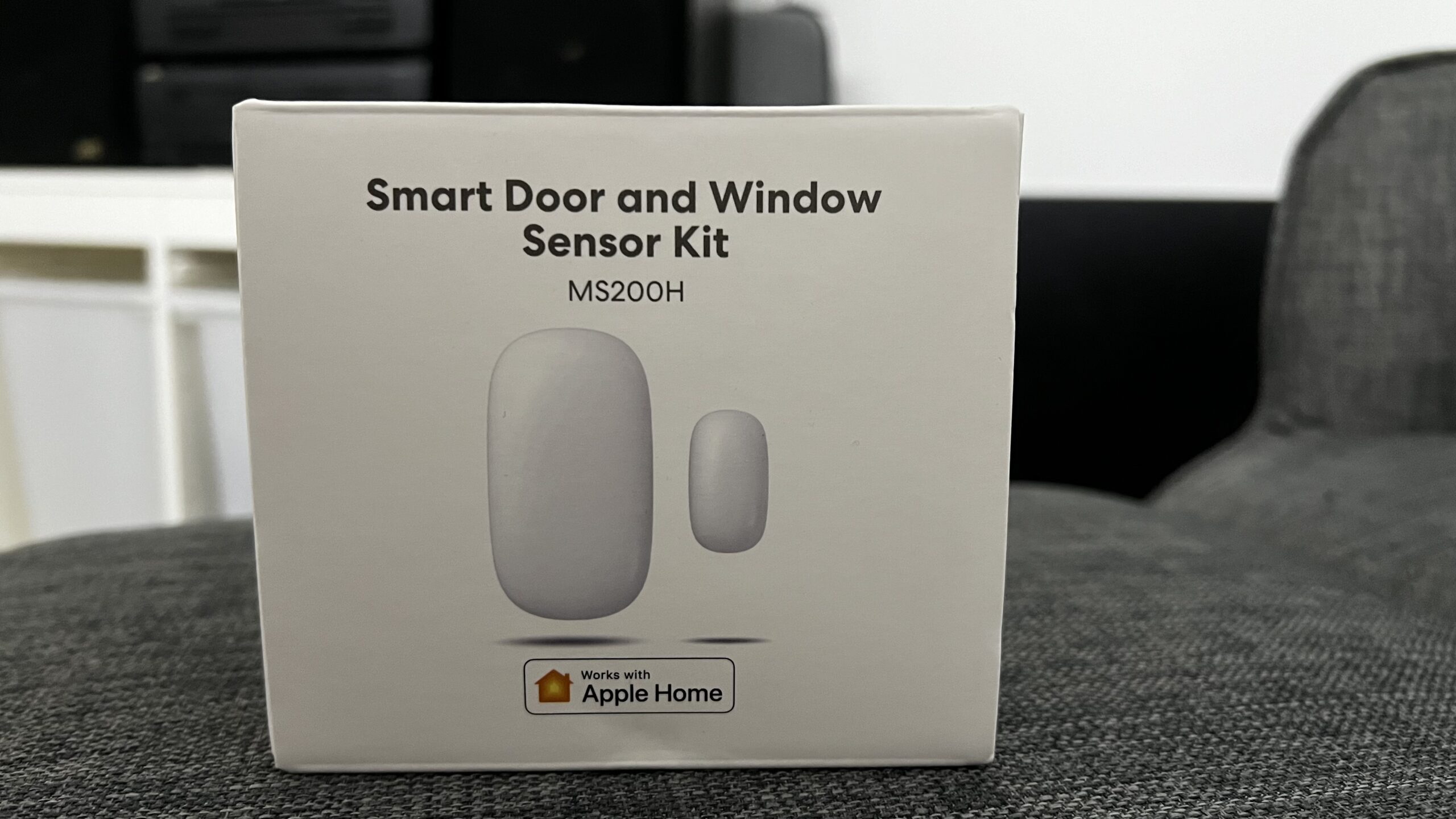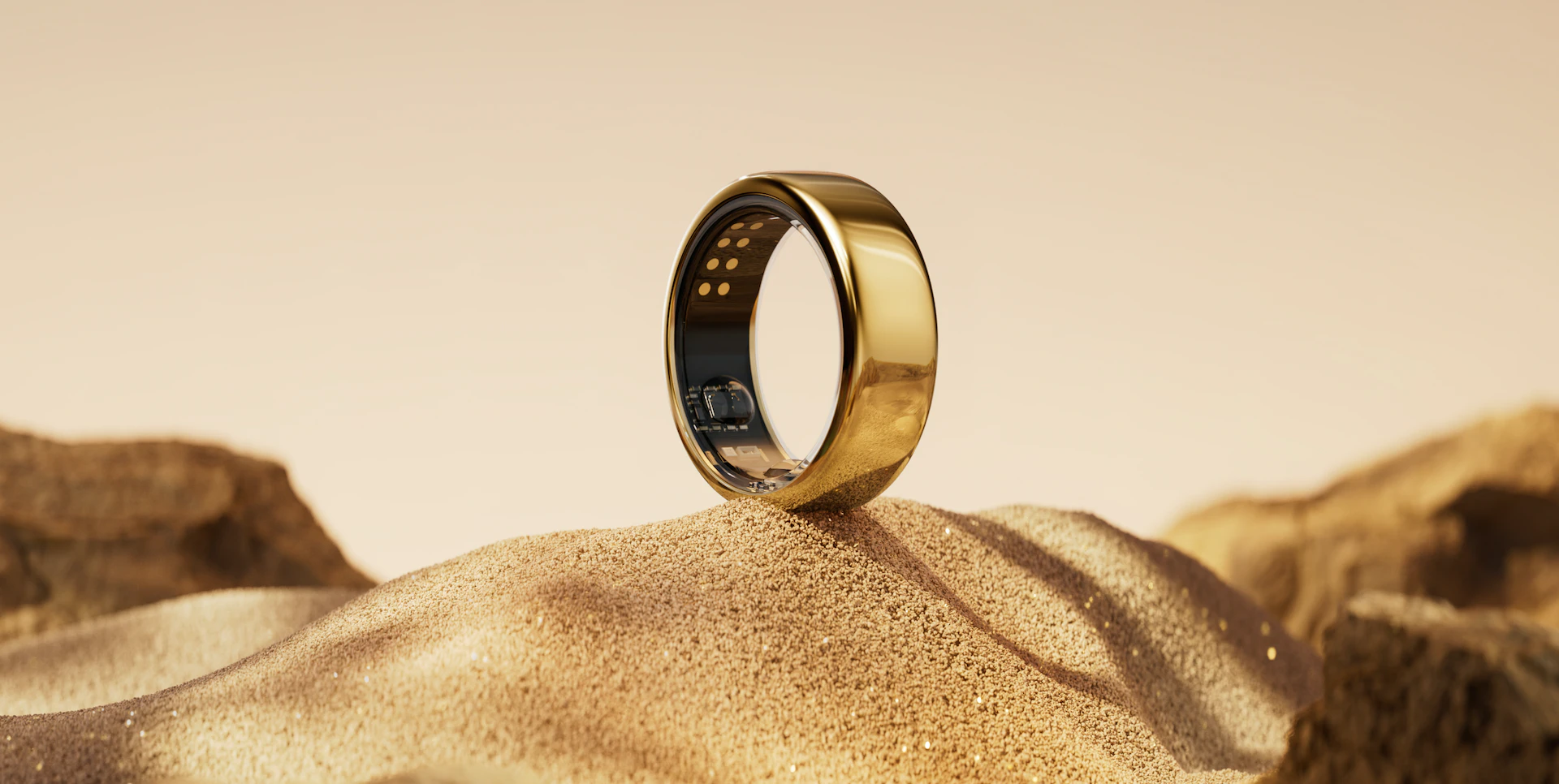
An excellent highly customisable controller from BEITONG, compatible with a number of devices and featuring some unique hardware choices that include hardware adjustable deadzone on thumbsticks, trigger locks, and 2 back buttons.
| Pros | Cons | |
| Excellent Customisation Software Great feeling buttons Deadzone control for thumbsticks Compatible with lots of different devices 2 back buttons | Light feeling D-Pad may put off some people Stylistically basic |
We’ve got a highly customisable gaming controller from BEITONG, who have been around for over 20 years in the peripheral market and certainly seem to know what they’re doing with this particular device.
First impressions
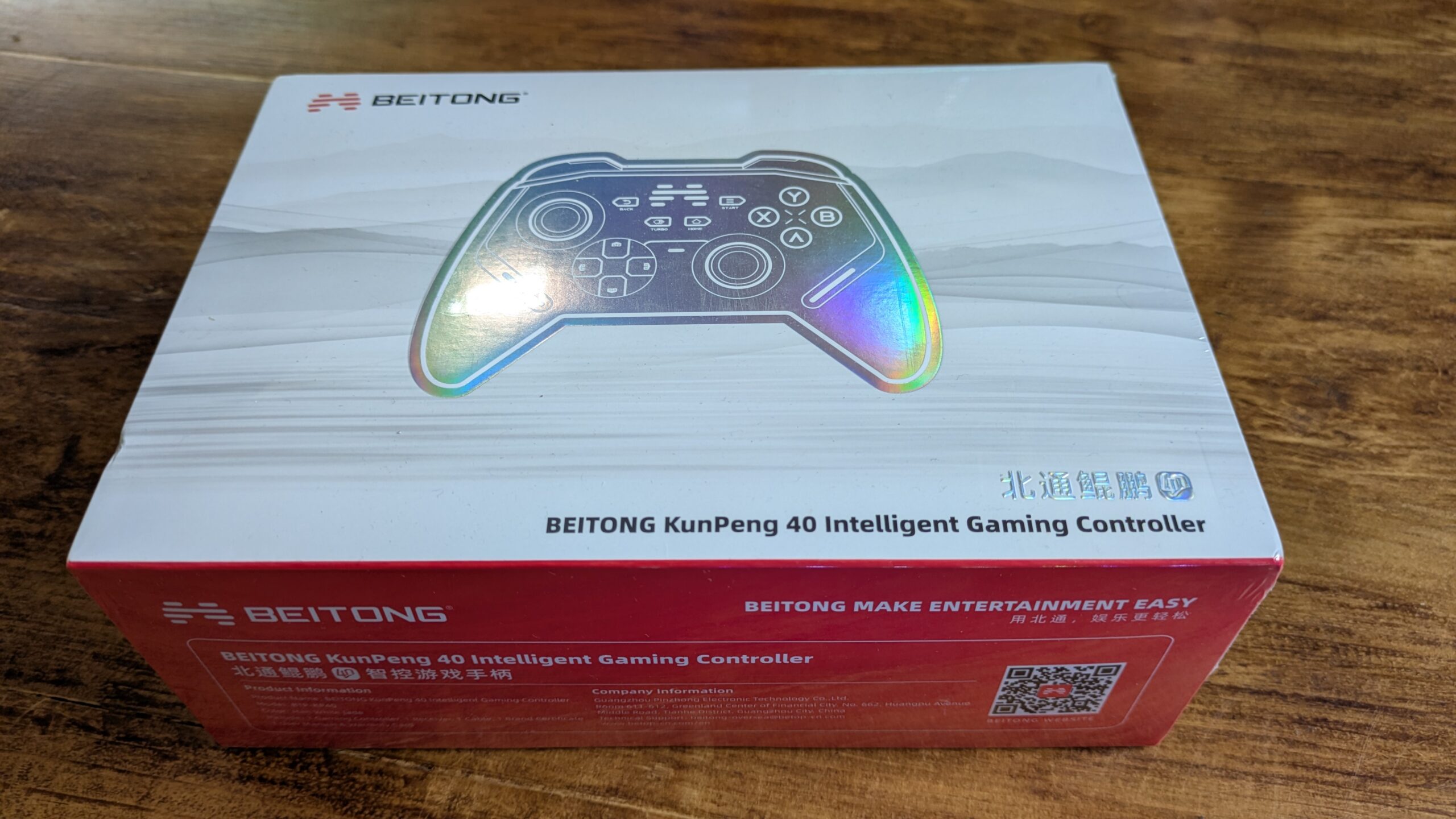
First off, this has been packaged beautifully – the box is shiny!! The controller itself looks clean, almost like it came out of a sterile room lab, with an unusual looking “floaty” D-pad and metal-looking rings around the thumbsticks (we’ll get to these later). Whether this look appeals to you will be down to your personal preference, but I very much liked it, although I dread to think what greasy gamer hands will do to the white look after a while!
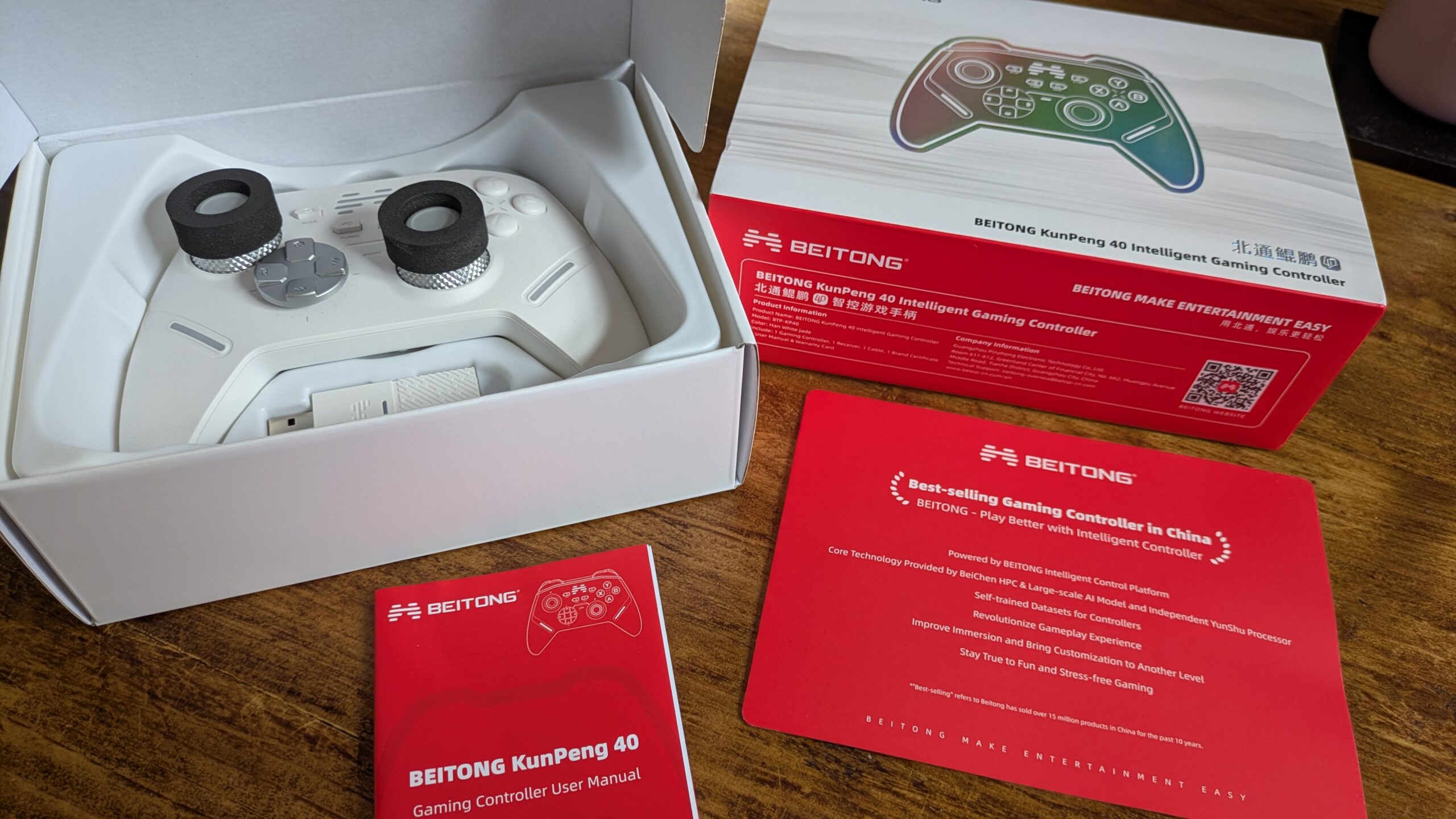
The thumbsticks themselves were padded and well protected for shipping. Also, I must say I was impressed with the manual (such as it is) – it very clearly describes the various functions of the controller, of which there are a surprisingly long list!
Buttons and features
The controller has the standard set of buttons expected in an Xbox layout and shape, although it feels a little lighter than it looks. The front also features three LED lights, that change colour depending on how the controller is connected and its charging state. The D-Pad on the front is actually of the floaty “rocker” type, which could be interesting in use. The thumbsticks feel good, although the clicks feel quite soft. They are TMR sticks which theoretically means no drift! The rotating rings around them can be used to adjust “damping” (i.e. the dead zone) according to the instructions, supposedly to aid in things like aiming precision and more agile movement – we’ll see how this works in practice, but they do appear to make the movement of each stick tighter/looser. All the buttons have a nice small click to them, so your mileage may vary if you like silent buttons.
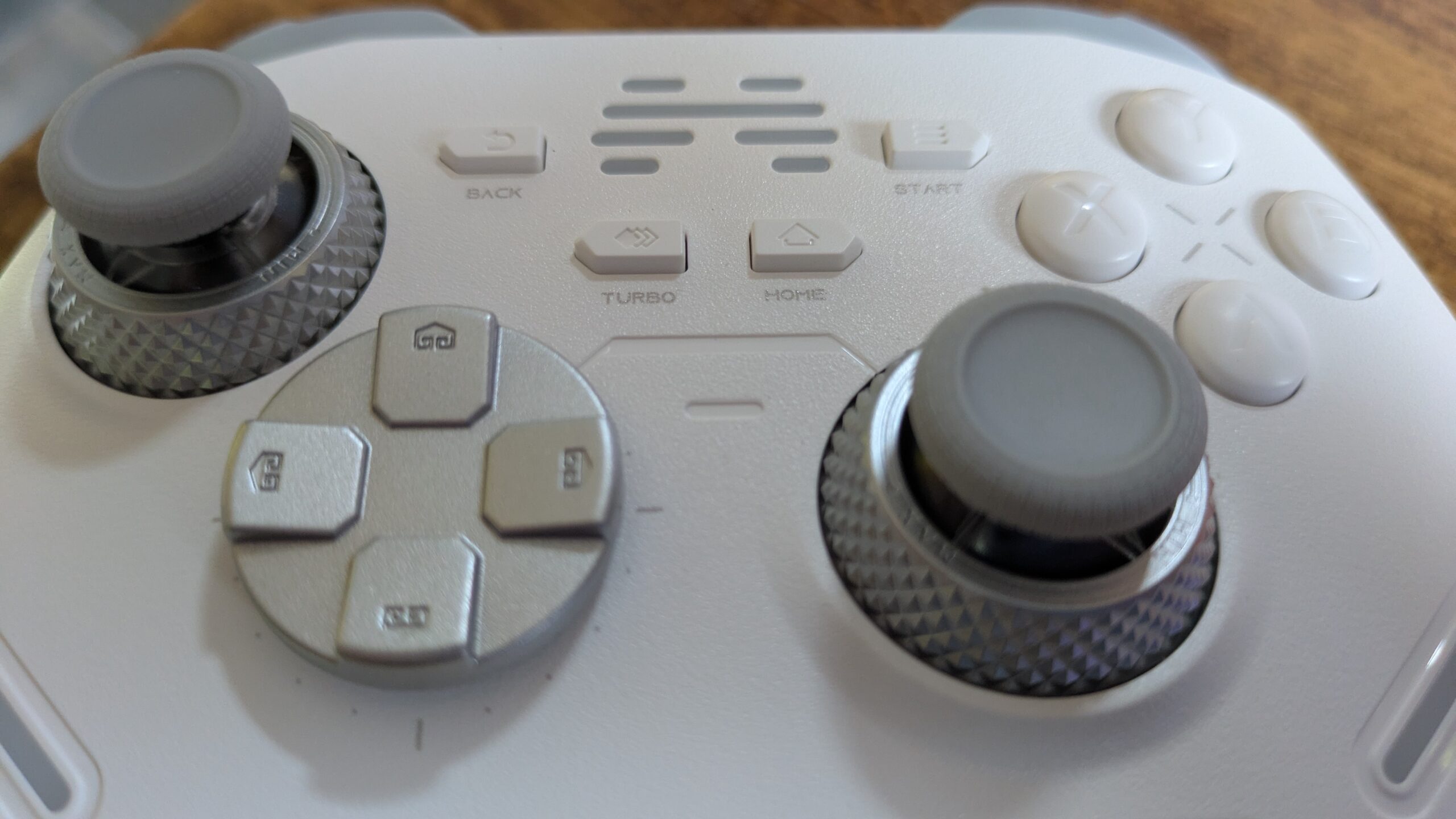
On the rear, we have just two back buttons, and trigger lock switches that change how deep the triggers can be depressed, a wireless charging connector (a charging dock is available to purchase separately), and a switch that changes how the controller connects.
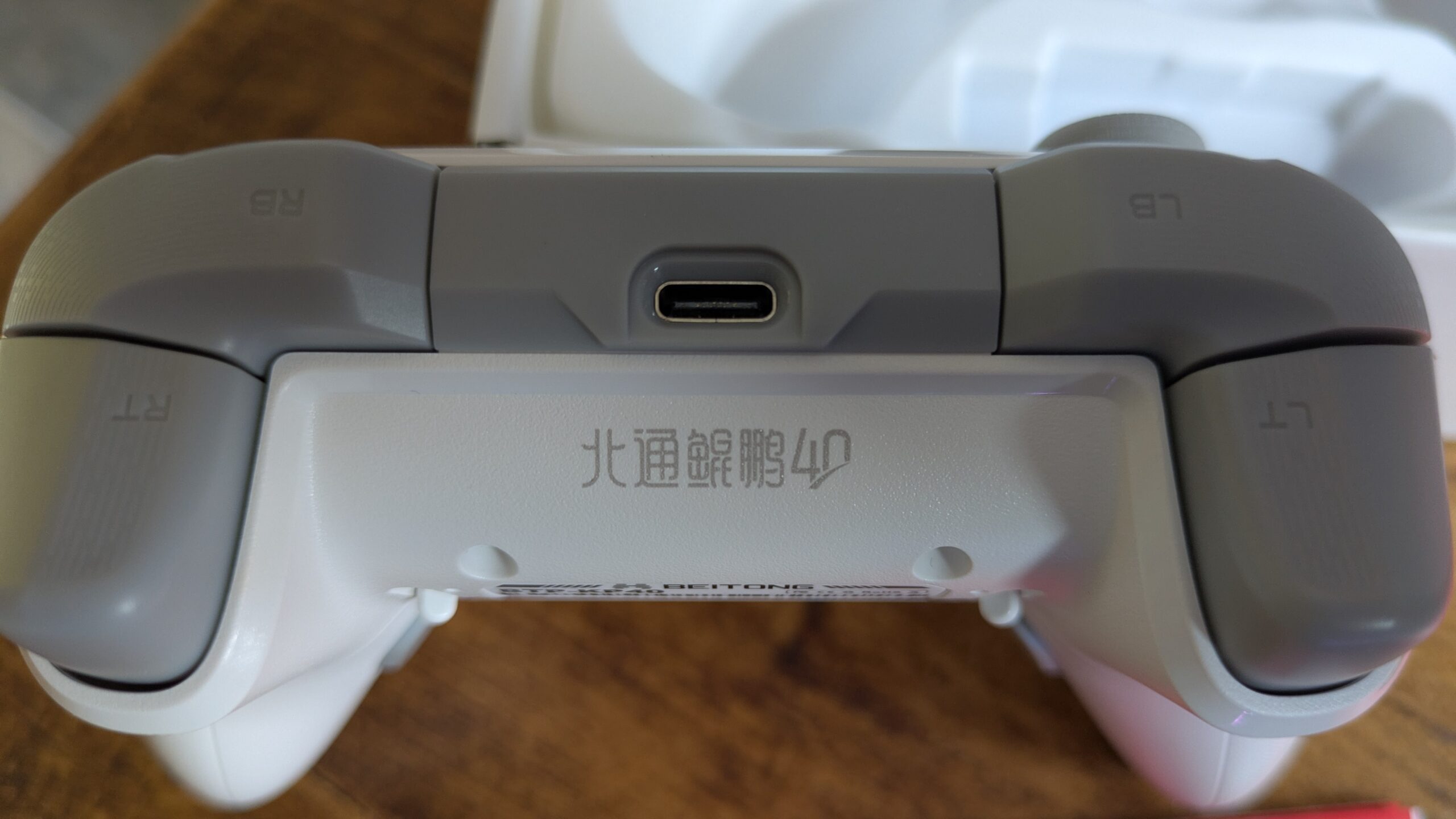
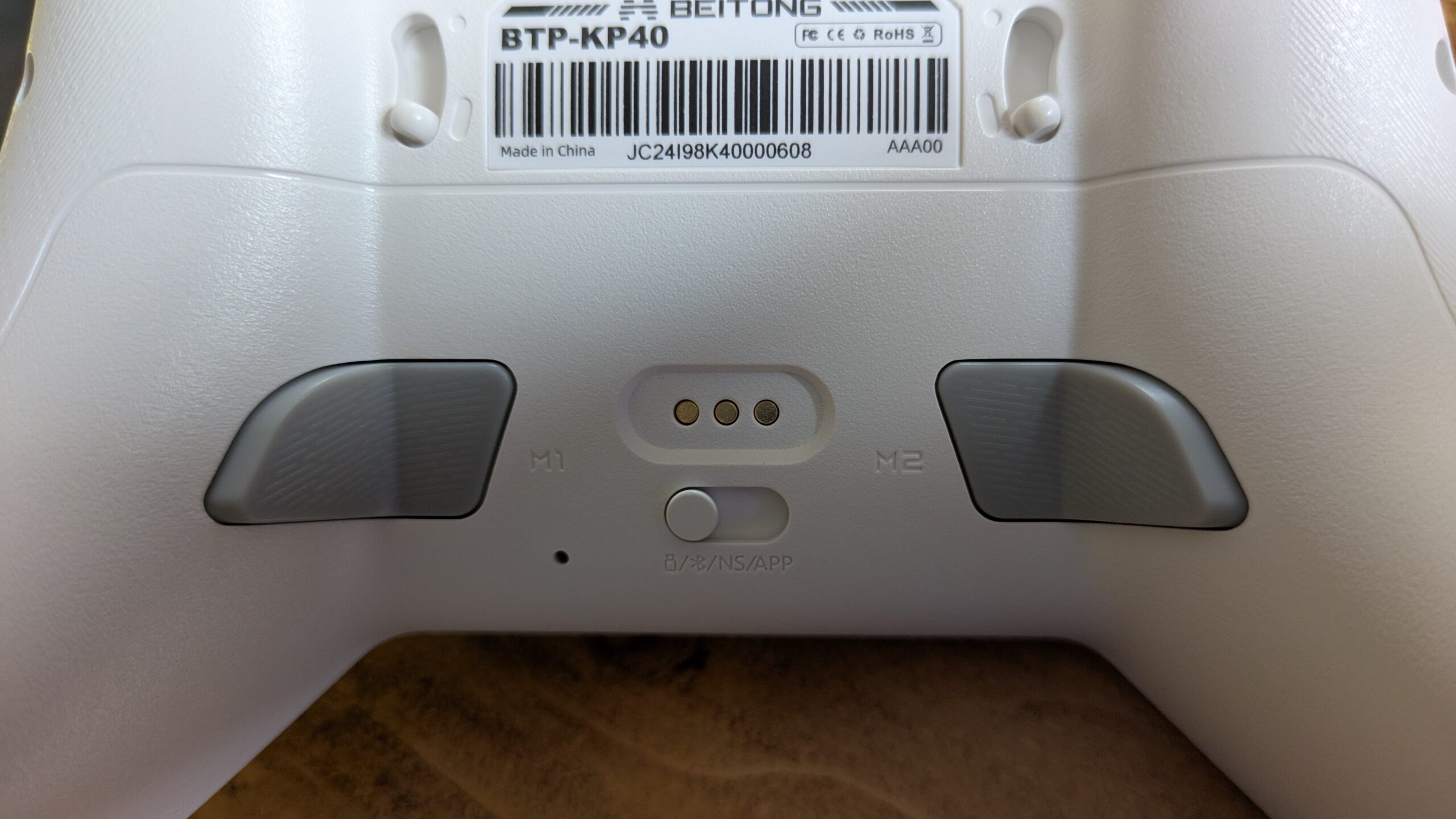
There is also apparently 6-axis motion control available, and whilst there is no mention of any kind of rumble/vibration, when I we plugged it in a nice hefty haptic feedback was felt on the depression of the triggers. Interestingly, the triggers initiate a different feeling feedback for each button.
Connection modes and software
The controller can be connected via its own dongle, and three variations on Bluetooth – Xinput, Nintendo Switch and BFM (an alternative Bluetooth connection protocol for connecting to phones for example), and it also can be connected via USB-C cable.
There is also a PC software suite that should allow detailed customisation of the controller and its buttons. It should be noted, there are controllers out there that can have macros programmed for the rear buttons without the use of PC software.
BEITONG Gamepad Assistant
Downloading the Gamepad Assistant software is required for customising and configuring the controller. It should be noted that the software suite is an unsigned portable (i.e. no installation) package on Windows, but it works well! Plugging in the dongle required a firmware update to it, and the controller too when connected via cable. Note: the software only works when using the provided dongle or a cable to connect the controller!
On first run through of the suite, there was a rather excellent walkthrough of how to use it when the controller is switched on. The buttons all responded when pressed or moved, and an indicator showed up in the software. There are a few interesting bits of configuration options available aside from the expected light configurations, timeouts, motion and vibrations settings, button mappings and macros (see later on for more on macros).

Detailed options are available to control the “curve” of the thumbsticks, allowing you to change how much output a movement in any direction generates. Presumably this is aimed at the hardcore gamers looking for fine tuning their playing styles in FPS games and such. When combined with the actual hardware control rings that tighten/loosen them, they could pretty much suit any player’s needs.

Playing Games
PC (Steam)
Game Played – Hardspace: Shipbreaker
This game involved moving around in a various directions in space so seemed a good test for the controller.
On my first attempt at connecting via the supplied dongle, it did not go well. There we delayed responses to presses, weird lagging. It may have been something to do with steam input or my setup, but when I disconnected the dongle and switched to Bluetooth mode and it was an instant improvement.
The game requires moving in 3 dimensions in space and often needs a bit of precise aiming because of the inertia (you are essentially weightless in space!), so I tightened up the right thumbstick and there was a noticeable incredible difference! Very cool feature.
Other worthwhile mentions – the back buttons are by default mapped to the thumbstick buttons. You have to push both down in normal gameplay to zero out all movement, but having the back buttons available to use instead is another win.
Nintendo Switch
Games Played – Mario Kart 8 and Puyo Puyo Tetris
After the usual faff getting the controller paired (using the NS mode), it was recognised quickly as a Pro Controller. I’m a big fan of the Nintendo Pro Controller, so it was interesting to compare. After a quick remap of the B/A buttons (it irritates me that Nintendo like to do things their own way) I fired up MK8.
It plays well! This is despite feeling much lighter than a pro controller. Next thing to try was to an opportunity to properly use the D-pad in Tetris. Despite my initial apprehension on the rocker style D-pad, it proved responsive and no different to a regular D-page, with no accidental diagonals or missed presses.
I also briefly tried setting up a Macro on the PC (you can set these up separately for the Switch and PC modes), and set three left presses to the left back button, and likewise to the right. The macros are sophisticated enough to support timings to the millisecond for each press, and when I tested it on the Switch it certainly appeared that way.
Android
Game Played – Minecraft
I wasn’t looking to check anything complicated out here, just wanted to see how the controller paired and played with my Google Pixel 8a. Minecraft does have good controller support on Android so I fired it up after pairing the controller in BFM mode. It works!
Steam Link
Game Played – Hardspace: Shipbreaker
Out of curiosity, I wanted to see how well it worked with a Steam Link device as I happened to have one. I had to use the APP mode (Bluetooth BFM) to get it to pair properly but it worked! And again, I played Hardspace: Shipbreaker and response time was virtually identical.
Conclusion
There’s some questions around how this controller compares to others in this price range and “serious” gamers may find their mileage varies with it too despite some of the features clearly being targeted to them. However, ultimately I can very much recommend the rather excellent BEITONG K40 controller to most gamers, particularly when it is paired with the software suite.
All product links directing off-site will be affiliate links when possible and where applicable, and may result in commission earned on qualifying purchases. Find out more about our promise to you.



